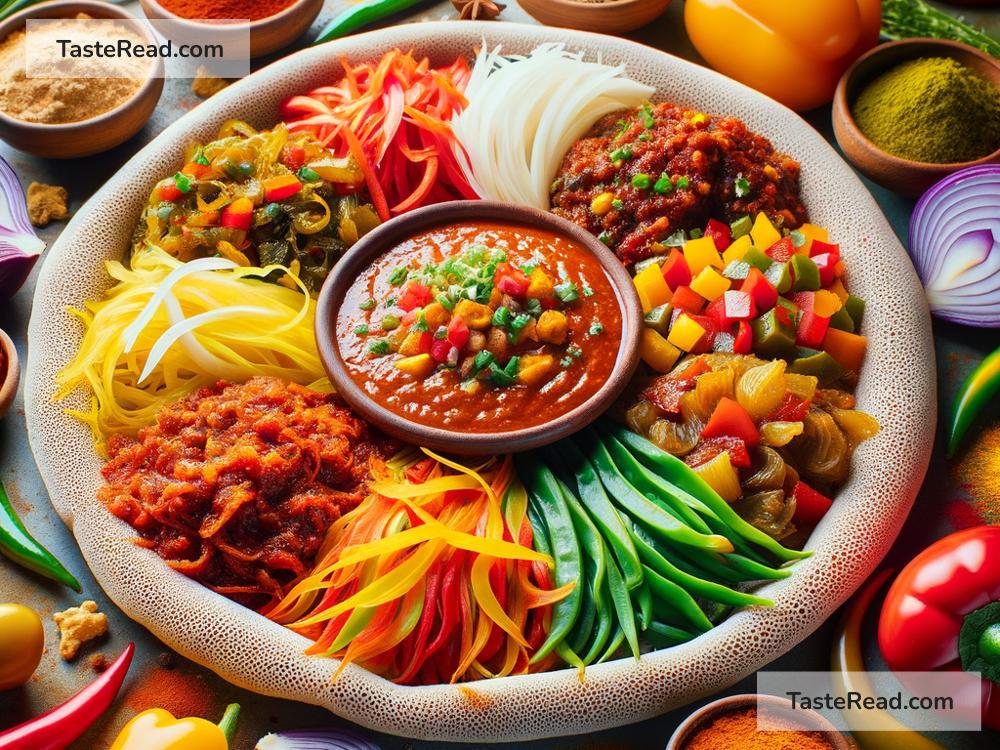Why Ethiopian Cuisine is a Feast for the Senses: Injera and Wat
Ethiopian cuisine is a delightful journey for your senses, bringing a symphony of flavors, aromas, and textures to your palate. At the heart of this cuisine lie two quintessential elements: Injera and Wat, which together create a dining experience unlike any other. Discover why these traditional dishes are more than just food – they’re a celebration of Ethiopian culture and a feast for the senses.
Injera: The Spongy Wonder
Imagine a large, spongy pancake with a slightly sour taste, and you’ve got injera. Made from teff flour, which comes from a tiny grain native to Ethiopia, injera is not just a side or a base – it’s the utensil and the plate, all rolled into one! The process of making injera is an art passed down through generations. It’s fermented, much like sourdough, which gives it that distinct tangy flavor that perfectly complements the spicy stews it’s served with.
The texture of injera is truly unique; it’s soft and porous, which means it does an excellent job of soaking up all the delicious sauces it’s served with. When you see it on the table, it’s usually rolled or folded into beautiful patterns, and its light, airy texture is a joy both to look at and to touch. As you tear off a piece with your hands, you’re instantly connected to the Ethiopian way of dining, which is communal and grounded in the sharing of meals.
Wat: The Flavor-packed Stew
Now, onto the star accompaniment: Wat (or Wot), a spicy stew that’s rich in flavors and colors. Wat can be made from chicken, beef, lamb, or even lentils and vegetables, making it incredibly versatile. The stew is slow-cooked and seasoned with a blend of spices, including the famous Ethiopian berbere, which gives it a vibrant red color and a kick of heat that’s wonderfully addictive.
Each bite of wat is a surprise for your taste buds, combining spicy, sweet, and savory notes. The complexity of flavors is achieved through the careful layering of ingredients and spices, cooked slowly to meld them into perfect harmony. Whether you choose a meat-based or a vegetarian option, wat is a generous, bold statement on the plate – rich, deeply satisfying, and full of heart.
A Feast for the Senses
Eating Ethiopian food is about much more than just tasting. It’s an immersive experience that engages all your senses. Visually, the spread of injera covered with various types of wat is a feast for the eyes, with its vibrant colors and textures begging you to dive in. The aroma that fills the room as the dishes are served is warm and inviting, hinting at the rich flavors waiting to be discovered.
As you use your hands to tear off a piece of injera and scoop up some wat, you’re not just eating; you’re participating in a ritual that is deeply rooted in Ethiopian culture. The act of sharing food from the same plate fosters a sense of community and togetherness that is central to the dining experience. This communal approach to eating transforms a simple meal into a bonding activity, bringing people together in a way that few other cuisines do.
Moreover, the texture play between the spongy injera and the thick, hearty wat creates a delightful contrast in your mouth. The sourness of the injera balances the spiciness of the wat, ensuring that each bite is harmonious and just as exciting as the last.
Conclusion
Ethiopian cuisine, with injera and wat at its core, is a vibrant celebration of flavors, textures, and traditions. It’s a cuisine that doesn’t just satisfy hunger; it delights the senses and brings people together in a shared experience of joy and community. Whether you’re tearing into your first piece of injera or scooping up the last bit of wat, you’re participating in a tradition that is rich in history and bursting with flavor. So, the next time you have the opportunity to try Ethiopian food, dive in with both hands and an open heart – a feast for the senses awaits.


